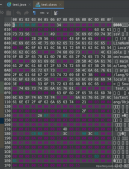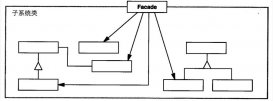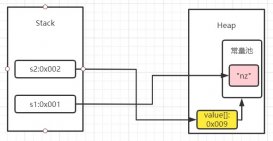前言
本文分析的是spring boot 1.3. 的工作原理。spring boot 1.4. 之后打包结构发现了变化,增加了BOOT-INF目录,但是基本原理还是不变的。
关于spring boot 1.4.* 里ClassLoader的变化,可以参考:https://www.zzvips.com/article/161572.html
spring boot quick start
在spring boot里,很吸引人的一个特性是可以直接把应用打包成为一个jar/war,然后这个jar/war是可以直接启动的,不需要另外配置一个Web Server。
如果之前没有使用过spring boot可以通过下面的demo来感受下。
下面以这个工程为例,演示如何启动Spring boot项目:
|
1
2
3
|
git clone git@github.com:hengyunabc/spring-boot-demo.gitmvn spring-boot-demojava -jar target/demo-0.0.1-SNAPSHOT.jar |
如果使用的IDE是spring sts或者idea,可以通过向导来创建spring boot项目。
对spring boot的两个疑问
刚开始接触spring boot时,通常会有这些疑问
-
spring boot如何启动的?
-
spring boot embed tomcat是如何工作的? 静态文件,jsp,网页模板这些是如何加载到的?
下面来分析spring boot是如何做到的。
打包为单个jar时,spring boot的启动方式
maven打包之后,会生成两个jar文件:
|
1
2
|
demo-0.0.1-SNAPSHOT.jardemo-0.0.1-SNAPSHOT.jar.original |
其中demo-0.0.1-SNAPSHOT.jar.original是默认的maven-jar-plugin生成的包。
demo-0.0.1-SNAPSHOT.jar是spring boot maven插件生成的jar包,里面包含了应用的依赖,以及spring boot相关的类。下面称之为fat jar。
先来查看spring boot打好的包的目录结构(不重要的省略掉):
|
1
2
3
4
5
6
7
8
9
10
11
12
13
14
15
16
17
18
19
20
21
|
├── META-INF│ ├── MANIFEST.MF├── application.properties├── com│ └── example│ └── SpringBootDemoApplication.class├── lib│ ├── aopalliance-1.0.jar│ ├── spring-beans-4.2.3.RELEASE.jar│ ├── ...└── org └── springframework └── boot └── loader ├── ExecutableArchiveLauncher.class ├── JarLauncher.class ├── JavaAgentDetector.class ├── LaunchedURLClassLoader.class ├── Launcher.class ├── MainMethodRunner.class ├── ... |
依次来看下这些内容。
MANIFEST.MF
|
1
2
3
4
5
6
7
8
|
Manifest-Version: 1.0Start-Class: com.example.SpringBootDemoApplicationImplementation-Vendor-Id: com.exampleSpring-Boot-Version: 1.3.0.RELEASECreated-By: Apache Maven 3.3.3Build-Jdk: 1.8.0_60Implementation-Vendor: Pivotal Software, Inc.Main-Class: org.springframework.boot.loader.JarLauncher |
可以看到有Main-Class是org.springframework.boot.loader.JarLauncher ,这个是jar启动的Main函数。
还有一个Start-Class是com.example.SpringBootDemoApplication,这个是我们应用自己的Main函数。
|
1
2
3
4
5
6
7
|
@SpringBootApplicationpublic class SpringBootDemoApplication { public static void main(String[] args) { SpringApplication.run(SpringBootDemoApplication.class, args); }} |
com/example 目录
这下面放的是应用的.class文件。
lib目录
这里存放的是应用的Maven依赖的jar包文件。
比如spring-beans,spring-mvc等jar。
org/springframework/boot/loader 目录
这下面存放的是Spring boot loader的.class文件。
Archive的概念
-
archive即归档文件,这个概念在linux下比较常见
-
通常就是一个tar/zip格式的压缩包
-
jar是zip格式
在spring boot里,抽象出了Archive的概念。
一个archive可以是一个jar(JarFileArchive),也可以是一个文件目录(ExplodedArchive)。可以理解为Spring boot抽象出来的统一访问资源的层。
上面的demo-0.0.1-SNAPSHOT.jar 是一个Archive,然后demo-0.0.1-SNAPSHOT.jar里的/lib目录下面的每一个Jar包,也是一个Archive。
|
1
2
3
4
5
|
public abstract class Archive { public abstract URL getUrl(); public String getMainClass(); public abstract Collection<Entry> getEntries(); public abstract List<Archive> getNestedArchives(EntryFilter filter); |
可以看到Archive有一个自己的URL,比如:
|
1
|
jar:file:/tmp/target/demo-0.0.1-SNAPSHOT.jar!/ |
还有一个getNestedArchives函数,这个实际返回的是demo-0.0.1-SNAPSHOT.jar/lib下面的jar的Archive列表。它们的URL是:
|
1
2
|
jar:file:/tmp/target/demo-0.0.1-SNAPSHOT.jar!/lib/aopalliance-1.0.jarjar:file:/tmp/target/demo-0.0.1-SNAPSHOT.jar!/lib/spring-beans-4.2.3.RELEASE.jar |
JarLauncher
从MANIFEST.MF可以看到Main函数是JarLauncher,下面来分析它的工作流程。
JarLauncher类的继承结构是:
|
1
2
|
class JarLauncher extends ExecutableArchiveLauncherclass ExecutableArchiveLauncher extends Launcher |
以demo-0.0.1-SNAPSHOT.jar创建一个Archive:
JarLauncher先找到自己所在的jar,即demo-0.0.1-SNAPSHOT.jar的路径,然后创建了一个Archive。
下面的代码展示了如何从一个类找到它的加载的位置的技巧:
|
1
2
3
4
5
6
7
8
9
10
11
12
13
14
15
16
|
protected final Archive createArchive() throws Exception { ProtectionDomain protectionDomain = getClass().getProtectionDomain(); CodeSource codeSource = protectionDomain.getCodeSource(); URI location = (codeSource == null ? null : codeSource.getLocation().toURI()); String path = (location == null ? null : location.getSchemeSpecificPart()); if (path == null) { throw new IllegalStateException("Unable to determine code source archive"); } File root = new File(path); if (!root.exists()) { throw new IllegalStateException( "Unable to determine code source archive from " + root); } return (root.isDirectory() ? new ExplodedArchive(root) : new JarFileArchive(root));} |
获取lib/下面的jar,并创建一个LaunchedURLClassLoader
JarLauncher创建好Archive之后,通过getNestedArchives函数来获取到demo-0.0.1-SNAPSHOT.jar/lib下面的所有jar文件,并创建为List。
注意上面提到,Archive都是有自己的URL的。
获取到这些Archive的URL之后,也就获得了一个URL[]数组,用这个来构造一个自定义的ClassLoader:LaunchedURLClassLoader。
创建好ClassLoader之后,再从MANIFEST.MF里读取到Start-Class,即com.example.SpringBootDemoApplication,然后创建一个新的线程来启动应用的Main函数。
|
1
2
3
4
5
6
7
8
9
10
11
12
13
14
15
16
17
18
19
20
21
22
|
/** * Launch the application given the archive file and a fully configured classloader. */protected void launch(String[] args, String mainClass, ClassLoader classLoader) throws Exception { Runnable runner = createMainMethodRunner(mainClass, args, classLoader); Thread runnerThread = new Thread(runner); runnerThread.setContextClassLoader(classLoader); runnerThread.setName(Thread.currentThread().getName()); runnerThread.start();}/** * Create the {@code MainMethodRunner} used to launch the application. */protected Runnable createMainMethodRunner(String mainClass, String[] args, ClassLoader classLoader) throws Exception { Class<?> runnerClass = classLoader.loadClass(RUNNER_CLASS); Constructor<?> constructor = runnerClass.getConstructor(String.class, String[].class); return (Runnable) constructor.newInstance(mainClass, args);} |
LaunchedURLClassLoader
LaunchedURLClassLoader和普通的URLClassLoader的不同之处是,它提供了从Archive里加载.class的能力。
结合Archive提供的getEntries函数,就可以获取到Archive里的Resource。当然里面的细节还是很多的,下面再描述。
spring boot应用启动流程总结
看到这里,可以总结下Spring Boot应用的启动流程:
-
spring boot应用打包之后,生成一个fat jar,里面包含了应用依赖的jar包,还有Spring boot loader相关的类
-
Fat jar的启动Main函数是JarLauncher,它负责创建一个LaunchedURLClassLoader来加载/lib下面的jar,并以一个新线程启动应用的Main函数。
spring boot loader里的细节
代码地址:https://github.com/spring-projects/spring-boot/tree/master/spring-boot-tools/spring-boot-loader
JarFile URL的扩展
Spring boot能做到以一个fat jar来启动,最重要的一点是它实现了jar in jar的加载方式。
JDK原始的JarFile URL的定义可以参考这里:
http://docs.oracle.com/javase/7/docs/api/java/net/JarURLConnection.html
原始的JarFile URL是这样子的:
|
1
|
jar:file:/tmp/target/demo-0.0.1-SNAPSHOT.jar!/ |
jar包里的资源的URL:
可以看到对于Jar里的资源,定义以'!/‘来分隔。原始的JarFile URL只支持一个'!/‘。
Spring boot扩展了这个协议,让它支持多个'!/‘,就可以表示jar in jar,jar in directory的资源了。
比如下面的URL表示demo-0.0.1-SNAPSHOT.jar这个jar里lib目录下面的spring-beans-4.2.3.RELEASE.jar里面的MANIFEST.MF:
自定义URLStreamHandler,扩展JarFile和JarURLConnection
在构造一个URL时,可以传递一个Handler,而JDK自带有默认的Handler类,应用可以自己注册Handler来处理自定义的URL。
|
1
2
3
4
5
6
|
public URL(String protocol, String host, int port, String file, URLStreamHandler handler) throws MalformedURLException |
Spring boot通过注册了一个自定义的Handler类来处理多重jar in jar的逻辑。
这个Handler内部会用SoftReference来缓存所有打开过的JarFile。
在处理像下面这样的URL时,会循环处理'!/‘分隔符,从最上层出发,先构造出demo-0.0.1-SNAPSHOT.jar这个JarFile,再构造出spring-beans-4.2.3.RELEASE.jar这个JarFile,然后再构造出指向MANIFEST.MF的JarURLConnection。
|
1
2
3
4
5
6
7
8
9
10
11
12
13
14
15
16
17
18
19
20
21
22
23
24
25
|
//org.springframework.boot.loader.jar.Handlerpublic class Handler extends URLStreamHandler { private static final String SEPARATOR = "!/"; private static SoftReference<Map<File, JarFile>> rootFileCache; @Override protected URLConnection openConnection(URL url) throws IOException { if (this.jarFile != null) { return new JarURLConnection(url, this.jarFile); } try { return new JarURLConnection(url, getRootJarFileFromUrl(url)); } catch (Exception ex) { return openFallbackConnection(url, ex); } } public JarFile getRootJarFileFromUrl(URL url) throws IOException { String spec = url.getFile(); int separatorIndex = spec.indexOf(SEPARATOR); if (separatorIndex == -1) { throw new MalformedURLException("Jar URL does not contain !/ separator"); } String name = spec.substring(0, separatorIndex); return getRootJarFile(name); } |
ClassLoader如何读取到Resource
对于一个ClassLoader,它需要哪些能力?
-
查找资源
-
读取资源
对应的API是:
|
1
2
|
public URL findResource(String name)public InputStream getResourceAsStream(String name) |
上面提到,Spring boot构造LaunchedURLClassLoader时,传递了一个URL[]数组。数组里是lib目录下面的jar的URL。
对于一个URL,JDK或者ClassLoader如何知道怎么读取到里面的内容的?
实际上流程是这样子的:
-
LaunchedURLClassLoader.loadClass
-
URL.getContent()
-
URL.openConnection()
-
Handler.openConnection(URL)
最终调用的是JarURLConnection的getInputStream()函数。
|
1
2
3
4
5
6
7
8
9
|
//org.springframework.boot.loader.jar.JarURLConnection @Override public InputStream getInputStream() throws IOException { connect(); if (this.jarEntryName.isEmpty()) { throw new IOException("no entry name specified"); } return this.jarEntryData.getInputStream(); } |
从一个URL,到最终读取到URL里的内容,整个过程是比较复杂的,总结下:
-
spring boot注册了一个Handler来处理”jar:”这种协议的URL
-
spring boot扩展了JarFile和JarURLConnection,内部处理jar in jar的情况
-
在处理多重jar in jar的URL时,spring boot会循环处理,并缓存已经加载到的JarFile
-
对于多重jar in jar,实际上是解压到了临时目录来处理,可以参考JarFileArchive里的代码
-
在获取URL的InputStream时,最终获取到的是JarFile里的JarEntryData
这里面的细节很多,只列出比较重要的一些点。
然后,URLClassLoader是如何getResource的呢?
URLClassLoader在构造时,有URL[]数组参数,它内部会用这个数组来构造一个URLClassPath:
|
1
|
URLClassPath ucp = new URLClassPath(urls); |
在 URLClassPath 内部会为这些URLS 都构造一个Loader,然后在getResource时,会从这些Loader里一个个去尝试获取。
如果获取成功的话,就像下面那样包装为一个Resource。
|
1
2
3
4
5
6
7
8
9
10
11
12
13
14
15
16
17
18
19
20
21
22
23
24
25
26
27
28
29
30
31
32
33
34
35
36
|
Resource getResource(final String name, boolean check) { final URL url; try { url = new URL(base, ParseUtil.encodePath(name, false)); } catch (MalformedURLException e) { throw new IllegalArgumentException("name"); } final URLConnection uc; try { if (check) { URLClassPath.check(url); } uc = url.openConnection(); InputStream in = uc.getInputStream(); if (uc instanceof JarURLConnection) { /* Need to remember the jar file so it can be closed * in a hurry. */ JarURLConnection juc = (JarURLConnection)uc; jarfile = JarLoader.checkJar(juc.getJarFile()); } } catch (Exception e) { return null; } return new Resource() { public String getName() { return name; } public URL getURL() { return url; } public URL getCodeSourceURL() { return base; } public InputStream getInputStream() throws IOException { return uc.getInputStream(); } public int getContentLength() throws IOException { return uc.getContentLength(); } };} |
从代码里可以看到,实际上是调用了url.openConnection()。这样完整的链条就可以连接起来了。
注意,URLClassPath这个类的代码在JDK里没有自带,在这里看到 http://grepcode.com/file/repository.grepcode.com/java/root/jdk/openjdk/7u40-b43/sun/misc/URLClassPath.java#506
在IDE/开放目录启动Spring boot应用
在上面只提到在一个fat jar里启动Spring boot应用的过程,下面分析IDE里Spring boot是如何启动的。
在IDE里,直接运行的Main函数是应用自己的Main函数:
|
1
2
3
4
5
6
7
|
@SpringBootApplicationpublic class SpringBootDemoApplication { public static void main(String[] args) { SpringApplication.run(SpringBootDemoApplication.class, args); }} |
其实在IDE里启动Spring boot应用是最简单的一种情况,因为依赖的Jar都让IDE放到classpath里了,所以Spring boot直接启动就完事了。
还有一种情况是在一个开放目录下启动Spring boot启动。所谓的开放目录就是把fat jar解压,然后直接启动应用。
|
1
|
java org.springframework.boot.loader.JarLauncher |
这时,Spring boot会判断当前是否在一个目录里,如果是的,则构造一个ExplodedArchive(前面在jar里时是JarFileArchive),后面的启动流程类似fat jar的。
Embead Tomcat的启动流程
判断是否在web环境
spring boot在启动时,先通过一个简单的查找Servlet类的方式来判断是不是在web环境:
|
1
2
3
4
5
6
7
8
9
10
11
|
private static final String[] WEB_ENVIRONMENT_CLASSES = { "javax.servlet.Servlet", "org.springframework.web.context.ConfigurableWebApplicationContext" };private boolean deduceWebEnvironment() { for (String className : WEB_ENVIRONMENT_CLASSES) { if (!ClassUtils.isPresent(className, null)) { return false; } } return true;} |
如果是的话,则会创建AnnotationConfigEmbeddedWebApplicationContext,否则Spring context就是AnnotationConfigApplicationContext:
|
1
2
3
4
5
6
7
8
9
10
11
12
13
14
15
16
17
|
//org.springframework.boot.SpringApplication protected ConfigurableApplicationContext createApplicationContext() { Class<?> contextClass = this.applicationContextClass; if (contextClass == null) { try { contextClass = Class.forName(this.webEnvironment ? DEFAULT_WEB_CONTEXT_CLASS : DEFAULT_CONTEXT_CLASS); } catch (ClassNotFoundException ex) { throw new IllegalStateException( "Unable create a default ApplicationContext, " + "please specify an ApplicationContextClass", ex); } } return (ConfigurableApplicationContext) BeanUtils.instantiate(contextClass); } |
获取EmbeddedServletContainerFactory的实现类
spring boot通过获取EmbeddedServletContainerFactory来启动对应的web服务器。
常用的两个实现类是TomcatEmbeddedServletContainerFactory和JettyEmbeddedServletContainerFactory。
启动Tomcat的代码:
|
1
2
3
4
5
6
7
8
9
10
11
12
13
14
15
16
17
18
19
20
|
//TomcatEmbeddedServletContainerFactory@Overridepublic EmbeddedServletContainer getEmbeddedServletContainer( ServletContextInitializer... initializers) { Tomcat tomcat = new Tomcat(); File baseDir = (this.baseDirectory != null ? this.baseDirectory : createTempDir("tomcat")); tomcat.setBaseDir(baseDir.getAbsolutePath()); Connector connector = new Connector(this.protocol); tomcat.getService().addConnector(connector); customizeConnector(connector); tomcat.setConnector(connector); tomcat.getHost().setAutoDeploy(false); tomcat.getEngine().setBackgroundProcessorDelay(-1); for (Connector additionalConnector : this.additionalTomcatConnectors) { tomcat.getService().addConnector(additionalConnector); } prepareContext(tomcat.getHost(), initializers); return getTomcatEmbeddedServletContainer(tomcat);} |
会为tomcat创建一个临时文件目录,如:
/tmp/tomcat.2233614112516545210.8080,做为tomcat的basedir。里面会放tomcat的临时文件,比如work目录。
还会初始化Tomcat的一些Servlet,比如比较重要的default/jsp servlet:
|
1
2
3
4
5
6
7
8
9
10
11
12
13
14
15
16
17
18
19
20
21
22
23
|
private void addDefaultServlet(Context context) { Wrapper defaultServlet = context.createWrapper(); defaultServlet.setName("default"); defaultServlet.setServletClass("org.apache.catalina.servlets.DefaultServlet"); defaultServlet.addInitParameter("debug", "0"); defaultServlet.addInitParameter("listings", "false"); defaultServlet.setLoadOnStartup(1); // Otherwise the default location of a Spring DispatcherServlet cannot be set defaultServlet.setOverridable(true); context.addChild(defaultServlet); context.addServletMapping("/", "default");}private void addJspServlet(Context context) { Wrapper jspServlet = context.createWrapper(); jspServlet.setName("jsp"); jspServlet.setServletClass(getJspServletClassName()); jspServlet.addInitParameter("fork", "false"); jspServlet.setLoadOnStartup(3); context.addChild(jspServlet); context.addServletMapping("*.jsp", "jsp"); context.addServletMapping("*.jspx", "jsp");} |
spring boot的web应用如何访问Resource
当spring boot应用被打包为一个fat jar时,是如何访问到web resource的?
实际上是通过Archive提供的URL,然后通过Classloader提供的访问classpath resource的能力来实现的。
index.html
比如需要配置一个index.html,这个可以直接放在代码里的src/main/resources/static目录下。
对于index.html欢迎页,spring boot在初始化时,就会创建一个ViewController来处理:
|
1
2
3
4
5
6
7
8
9
|
//ResourcePropertiespublic class ResourceProperties implements ResourceLoaderAware { private static final String[] SERVLET_RESOURCE_LOCATIONS = { "/" }; private static final String[] CLASSPATH_RESOURCE_LOCATIONS = { "classpath:/META-INF/resources/", "classpath:/resources/", "classpath:/static/", "classpath:/public/" }; |
|
1
2
3
4
5
6
7
8
9
|
//WebMvcAutoConfigurationAdapter @Override public void addViewControllers(ViewControllerRegistry registry) { Resource page = this.resourceProperties.getWelcomePage(); if (page != null) { logger.info("Adding welcome page: " + page); registry.addViewController("/").setViewName("forward:index.html"); } } |
template
像页面模板文件可以放在src/main/resources/template目录下。但这个实际上是模板的实现类自己处理的。比如ThymeleafProperties类里的:
|
1
|
public static final String DEFAULT_PREFIX = "classpath:/templates/"; |
jsp
jsp页面和template类似。实际上是通过spring mvc内置的JstlView来处理的。
可以通过配置spring.view.prefix来设定jsp页面的目录:
|
1
|
spring.view.prefix: /WEB-INF/jsp/ |
spring boot里统一的错误页面的处理
对于错误页面,Spring boot也是通过创建一个BasicErrorController来统一处理的。
|
1
2
3
|
@Controller@RequestMapping("${server.error.path:${error.path:/error}}")public class BasicErrorController extends AbstractErrorController |
对应的View是一个简单的HTML提醒:
|
1
2
3
4
5
6
7
8
9
10
11
12
13
14
15
16
17
|
@Configuration@ConditionalOnProperty(prefix = "server.error.whitelabel", name = "enabled", matchIfMissing = true)@Conditional(ErrorTemplateMissingCondition.class)protected static class WhitelabelErrorViewConfiguration { private final SpelView defaultErrorView = new SpelView( "<html><body><h1>Whitelabel Error Page</h1>" + "<p>This application has no explicit mapping for /error, so you are seeing this as a fallback.</p>" + "<div id='created'>${timestamp}</div>" + "<div>There was an unexpected error (type=${error}, status=${status}).</div>" + "<div>${message}</div></body></html>"); @Bean(name = "error") @ConditionalOnMissingBean(name = "error") public View defaultErrorView() { return this.defaultErrorView; } |
spring boot的这个做法很好,避免了传统的web应用来出错时,默认抛出异常,容易泄密。
spring boot应用的maven打包过程
先通过maven-shade-plugin生成一个包含依赖的jar,再通过spring-boot-maven-plugin插件把spring boot loader相关的类,还有MANIFEST.MF打包到jar里。
spring boot里有颜色日志的实现
当在shell里启动spring boot应用时,会发现它的logger输出是有颜色的,这个特性很有意思。
可以通过这个设置来关闭:
|
1
|
spring.output.ansi.enabled=false |
原理是通过AnsiOutputApplicationListener ,这个来获取这个配置,然后设置logback在输出时,加了一个 ColorConverter,通过org.springframework.boot.ansi.AnsiOutput ,对一些字段进行了渲染。
一些代码小技巧
实现ClassLoader时,支持JDK7并行加载
可以参考LaunchedURLClassLoader里的LockProvider
|
1
2
3
4
5
6
7
8
9
10
11
12
13
14
15
16
17
18
19
20
21
22
23
24
25
26
27
28
29
30
31
32
33
|
public class LaunchedURLClassLoader extends URLClassLoader { private static LockProvider LOCK_PROVIDER = setupLockProvider(); private static LockProvider setupLockProvider() { try { ClassLoader.registerAsParallelCapable(); return new Java7LockProvider(); } catch (NoSuchMethodError ex) { return new LockProvider(); } } @Override protected Class<?> loadClass(String name, boolean resolve) throws ClassNotFoundException { synchronized (LaunchedURLClassLoader.LOCK_PROVIDER.getLock(this, name)) { Class<?> loadedClass = findLoadedClass(name); if (loadedClass == null) { Handler.setUseFastConnectionExceptions(true); try { loadedClass = doLoadClass(name); } finally { Handler.setUseFastConnectionExceptions(false); } } if (resolve) { resolveClass(loadedClass); } return loadedClass; } } |
检测jar包是否通过agent加载的
InputArgumentsJavaAgentDetector,原理是检测jar的URL是否有”-javaagent:”的前缀。
|
1
|
private static final String JAVA_AGENT_PREFIX = "-javaagent:"; |
获取进程的PID
ApplicationPid,可以获取PID。
|
1
2
3
4
5
6
7
8
9
|
private String getPid() { try { String jvmName = ManagementFactory.getRuntimeMXBean().getName(); return jvmName.split("@")[0]; } catch (Throwable ex) { return null; }} |
包装Logger类
spring boot里自己包装了一套logger,支持java, log4j, log4j2, logback,以后有需要自己包装logger时,可以参考这个。
在org.springframework.boot.logging包下面。
获取原始启动的main函数
通过堆栈里获取的方式,判断main函数,找到原始启动的main函数。
|
1
2
3
4
5
6
7
8
9
10
11
12
13
14
|
private Class<?> deduceMainApplicationClass() { try { StackTraceElement[] stackTrace = new RuntimeException().getStackTrace(); for (StackTraceElement stackTraceElement : stackTrace) { if ("main".equals(stackTraceElement.getMethodName())) { return Class.forName(stackTraceElement.getClassName()); } } } catch (ClassNotFoundException ex) { // Swallow and continue } return null;} |
spirng boot的一些缺点:
当spring boot应用以一个fat jar方式运行时,会遇到一些问题。以下是个人看法:
- 日志不知道放哪,默认是输出到stdout的
- 数据目录不知道放哪, jenkinns的做法是放到 ${user.home}/.jenkins 下面
- 相对目录API不能使用,servletContext.getRealPath(“/“) 返回的是NULL
- spring boot应用喜欢把配置都写到代码里,有时会带来混乱。一些简单可以用xml来表达的配置可能会变得难读,而且凌乱。
总结
spring boot通过扩展了jar协议,抽象出Archive概念,和配套的JarFile,JarUrlConnection,LaunchedURLClassLoader,从而实现了上层应用无感知的all in one的开发体验。尽管Executable war并不是spring提出的概念,但spring boot让它发扬光大。
spring boot是一个惊人的项目,可以说是spring的第二春,spring-cloud-config, spring-session, metrics, remote shell等都是深爱开发者喜爱的项目、特性。几乎可以肯定设计者是有丰富的一线开发经验,深知开发人员的痛点。
以上就是本文的全部内容,希望对大家的学习有所帮助,也希望大家多多支持服务器之家。
原文链接:http://hengyunabc.github.io/spring-boot-application-start-analysis/

















